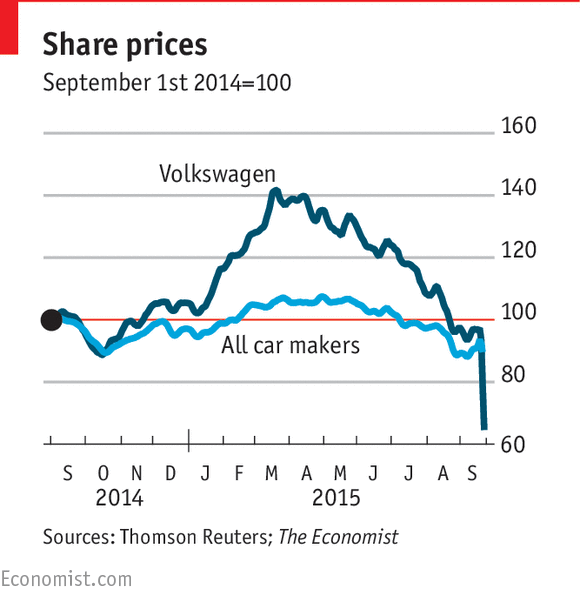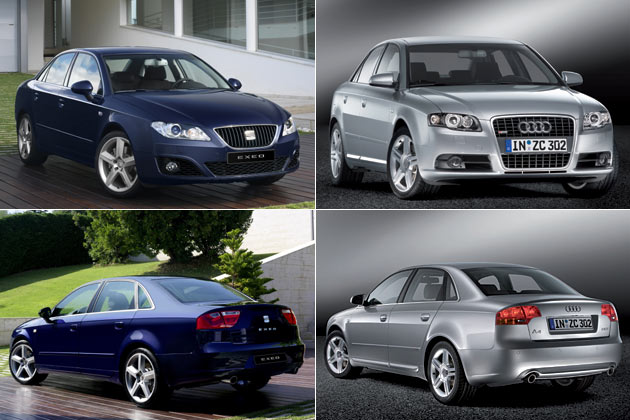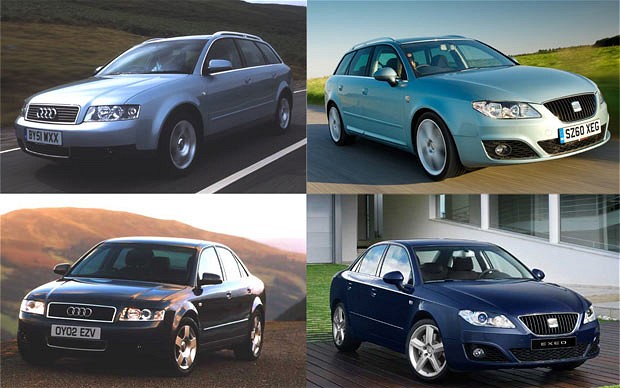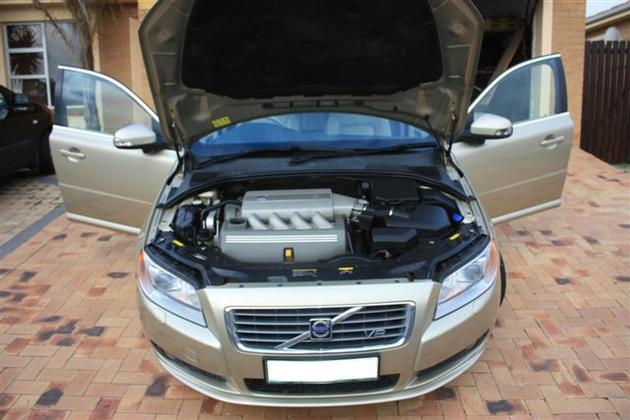I have to admit, I have been off my blog for nearly a year (my last post was in October). Mainly because I have never got myself round to writing, secondly because I had too many fingers in too many pies, and finally – because there were too many things to talk about and none that I thought about writing about…until last week.
For those of you who have no idea what so many car nuts are losing their heads about and why the VW Passat unveiling was not over the news (like if it ever would be. A “Passat” is like saying “A4 paper”. It’s the same kind of reaction), Volkswagen Group got into a bit of trouble over their 2.0 litre TDI engines. Volkswagen advertised their engines as being the benchmark for power and efficiency and having exhaust gasses that are cleaner than white clouds in a Summer sky over Iceland. Because of that their new customers all over the world bought loads of cars with these engines in them, around 11 million between 2009 and last Friday, in fact. But now it seems that this number won’t increase for some time. All is because Volkswagen were lying. Not about them being reliable or anything, but that they are actually not as clean as clouds over Iceland. They are actually dirtier than a Smog over London in the 1960s. But why it was unnoticed? Why nobody screamed about it before? Because they couldn’t tell.
THE PROBLEM
They couldn’t tell because VW, being the “Dr. Evil Enterprise” installed a device which basically when engaged turns the cleaning systems in the engine on, making exhausts as clean as advertised in the brochure. This device was programmed to start automatically, when it detects that an emissions test is in progress. After the emissions test is over, this device turns all of the cleansing systems off and the engine burns dirty fuel mixture. And how much dirtier is it? If you’re going to say “twice”, I’d say “don’t be too humble.” Five times? Nope. It emitted BETWEEN 10 TO 40 TIMES OVER THE ALLOWABLE EMISSIONS NORM. So that means if you have a VW Golf, Audi A3, Seat Leon or any other car with a 2.0 litre 4 cylinder Diesel engine and think that you’re actually saving the planet, you’re probably making the air dirtier than a footballer in a 6.0 litre W12 Bentley Continental GT. Maybe even four footballers.
THE INITIAL RESULT
Nobody knows exactly who blew the cover first – either United States Environmental Protection Agency (EPA, America’s environment agency who sets the emissions targets and do the testing. They probably don’t feel to well after realising they’ve been fooled right under their eyes) or some automotive company, who, like many others, buy competitors’ cars, disassemble them and see what makes competitors’ cars better. What we do know is that this has been the biggest PR disaster Volkswagen group have ever experienced. Because of that, and because of a very powerful and overly-sensitive nature of an average American consumer, the sales of diesel cars and loads of other VW Group models in the U.S. stopped overnight.
And it’s not like they are going to go and buy them anyway. So Volkswagen, who so far have handled it quite humanly, paid the dealers for diesel cars standing in dealer lots, as they know they will not be selling them anytime soon, if not at all. It has not been specified how much, but I believe it will be enough to keep these dealers afloat for some time, because VW really needs their dealer network now more than ever, as after this scandal it is hard to believe that anyone else will step in to help to sell their cars. VW also told them to stop selling them until the issue will be fully resolved with the EPA.
Speaking of EPA, Volkswagen are shaking nervously while they await their verdict on what fine they will have to pay. If the worst case scenario happens (which seems like it will, as Americans will see another opportunity to protect their local car industry against foreign competition), then VW will have to pay $37,500 per car in fines, which results in a total fine of $18 BILLION. That’s a fifth of their profits gone. However, VW still have the 10.5 million diesels elsewhere with the same device and the same mistake made by them. So…it could skim Volkswagen until they have no money in them. A massive risk.
Further, adding to their problems, VW saw $26bn of shareholders’ money just flying away in front of their eyes, as their share prices dropped from around $1.40 per share to 60 cents. That’s more than a half of company’s value gone. Adding more to that, their share prices could go further down in the future until the sales figures will be revealed for this quarter, showing actually how many cars they have actually sold less than before, especially diesels, which made 20-25% of their total U.S. sales. Shareholders would run faster than sprinters from the company, selling their worthless shares left and right. It scares me imagining what will happen next to them. All I know now is this: there is a chaos in the company.
First, their CEO, Martin Winterkorn, resigned just today (23rd September, 2015). The captain jumped ship before it sank. Everyone knows it was his fault, himself included, but you fix the problem and only then go. Second, VW aimed everything for their goal to become the biggest car company in the world by 2020, beating GM and Toyota in Sales, profits, and share prices. Looks like that goal is gone.

Shortly after the “Dieselgate” hit the fan, VW removed all of their “clean diesel” adverts, including these “Old Wives’ Tales” commercials, which even I saw on TV when I was in the States.
Worse still, VW’s credibility as a reliable manufacturer is seriously damaged. Last time someone had this much damage from a bad publicity cos of a diesel engine was Oldsmobile, the very reason why Americans don’t like diesel. In 1970s Oldsmobile, after the oil crisis, thought they could earn money on customers looking for a cheap, efficient car. A diesel was a perfect bet, as it consumes less fuel and is as powerful as petrol cars. However, because of typical GMness, the design for the diesel engine was simple and rushed. All they did was replace petrol spark plugs with diesel ones, rearranged spark plug timing and hey presto. It wasn’t – the engines used to blow up or not start at all, so by the time they solved the problem, diesel sales stopped completely and the reputation of a diesel engine was forever ruined for Americans. Same as now.
POSSIBLE OUTCOMES (MY PREDICTIONS)
Firstly, let’s look at this graph:
As you can see, VW from all brands contribute the least to their profits, yet earns most for their revenues. That means either they’ve allocated a huge chunk of money into development of new models, or they’ve reallocated it elsewhere to cover some losses or development of other projects, such as Bugatti Veyron’s successor, Bugatti Chiron. Then you see some higher value brands such as Audi (which are united with Lamborghini, because Audi branch exclusively own the brand) which are mechanically almost the same as VW, but here they pay that extra for the brand. The best example is Porsche/Bentley. According to Bloomberg, Porsche makes $23,000 on every car they sell, so they earn a VW Golf on each car they sell. Stronger on the brand spectrum than them is Bentley. I already talked about it in my previous blog post about VW’s badge engineering – Bentley Continental Flying Spur is nothing more than a VW Phaeton with a Bentley badge. The difference in price between VW and Bentley for this model is $100,000. Of course, Bentley has better leather and some wood, but in other ways it’s exactly the same. So Bentley earn an Audi A8 over every car it sells on top of the earnings of a VW Phaeton.
On the other end of the spectrum you have smaller brands like Škoda and Seat. For Škoda I could argue in favour more than against. They are the more differentiated than Volkswagen, as they have the Yeti and Rooster, which sell like cupcakes (at least until recently). However, the same cannot be said about Seat. For years VW executives have complained about how difficult it is to sell Seats and no matter how hard they’ve tried, they just don’t sell. Partly because they’re only sold in Europe, but mainly because they are just too similar to Volkswagens and Audis. I already showed this in my blog before, but they once actually made a Seat that’s exactly the same as an Audi A4. If you covered their brand logos up with sellotape, you could easily mix them up. There hasn’t been badge engineering this severe this side of GM.
So my guess is this: if Volkswagen will have a massive chunk bitten off their finances (which, at this moment in time, it looks like it most certainly will), Seat will be the first brand to leave VW. As you see in the graph above, they make a loos on every car they sell, which in every sensible business would be a case for a closure of the brand. They could do two things: either sell the brand to a different manufacturer, or sell just their factories and get rid of the brand completely. The problem with the former one is, to Volkswagens own regret, Seats are just too similar to every other VW group model out there, so every Seat will hold an answer to every mystery of VW Golf, Polo, Scirocco, Audis etc etc. It would be a goldmine for other manufacturers and a death sentence for VW, who would give away the competition a huge market share. On the other hand, the latter version could not bring in enough cash and bring in a huge outrage in Spain, as the brand is part of country’s history. It’s their own, SPANISH brand, a national pride (I know the feeling, living in a country that used to make Fords for Eastern Europe in late 1930s). Also, who would want to have an empty factory in Spain? Ford? They already have one. Jaguar Land Rover? They have factories under construction in Brazil and will be in the U.S. GM? They have Opel in Germany which nearly went under in the Financial Crisis. So there’s no demand. One thing for certain, though, is this: they will keep Porsche and Bentley. They bring in too much money to get rid of them.
If their efforts to raise cash quickly by selling brands will fail, then they will have to tighten their belts in the R&D department. Not only it will mean a reduced superiority over other brands, it will also mean a fall in reliability. So far they have been built really well, but as the graph before shows, they do not have a lot of profit cash to use to mend those problems, so they will have to use more of that revenue to cover their problems. That will further impact their sales globally, which is a real shame.
THE BRUTAL AUTOMOTIVE INDUSTRY
I am a fan of VW cars. But what I found most disgusting in this story is this: VW with this fault polluted the atmosphere more than initially everybody thought and they lied about it, but they killed nobody. General Motors, on the other hand, because of their lies and neglect, killed 31 people and injured 244. VW are facing extinction, yet all GM have done so far is pay mere $1.4bn in fines to shareholders and in fines to the U.S. Federal Government. In comparison, GM got away by paying pennies, yet their clueless, manipulated customers still buy their cars. Their sales actually were not affected by much. And VW are facing extinction. RIDICULOUS! Absolutely disgusting, that human lives are worth less than company’s integrity and truthfulness. All GM did was blame it on “Old GM”. Excuse me, but that’s exactly the same company. There is no difference. You screwed it up? You are responsible for it. That means VW’s new CEO has to say “that was Winterkorn’s VW. We’re different now” and prosecutors will forgive them? That is how it looks like.
But this shows how horrible the automotive industry can be – you never know what you’re gonna get (like Forrest Gump said). Whatever happens, I wish Volkswagen all the best of luck in the coming months, because that is what they will need most. They cannot hope on anything else for now but survival.

























![md_Aston_Martin_DB7_Vantage_-_rear_[QCX-432]_(Williams_Rd,_Toorak,_1_April_2007)](https://edgarscarsnfun.wordpress.com/wp-content/uploads/2014/08/md_aston_martin_db7_vantage_-_rear_qcx-432_williams_rd_toorak_1_april_2007.jpg?w=645&h=483)












